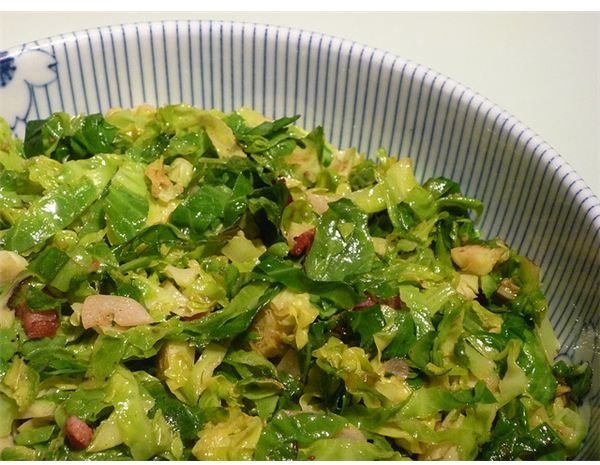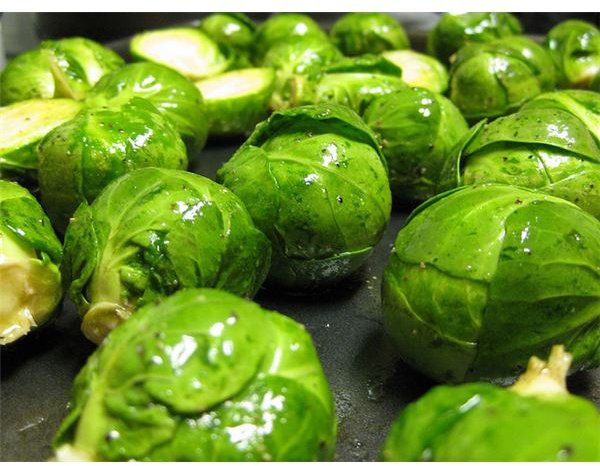How To Cook Brussels Sprouts Properly
Nutrients of Brussels Sprouts
As a member of the cabbage family, it is little wonder that Brussels sprouts are not one of the most popular vegetables. Even if you tell your children they are “fairy cabbages”, and convince your peers of Brussels sprouts natural health benefits, it can be a hard job convincing someone to eat them.
Brussels are low in calories at just 30 per half cup, and high in protein. The same serving size offers 2g of protein, which although of an incomplete nature, adding a small amount of grains to the cooked Brussels sprouts will make it complete, as well as adding texture and flavor.
As a cruciferous vegetable, Brussels sprouts may also offer some protection against some forms of cancer, according to Cancer Prevention Research Journal.
It is in knowing how to cook Brussels sprouts properly that you can preserve these wonderful nutrients, and make them much more appealing to your diners.
The Best Way to Cook Brussels Sprouts
The secret when learning to cook Brussels sprouts is in knowing how to avoid overcooking them. Overcooking Brussels sprouts not only destroys a lot of the nutrients they provide; it also makes them much more bitter and less palatable to taste.
Any good job begins with good preparation. The leaves of Brussels cook much more quickly than the core, so in order to get them to cook at the same rate, cutting an X into the bottom of each one ensures even cooking. If they are large, then cutting them into halves or quarters is advisable.
The ideal way to cook Brussels sprouts is by steaming. This is a steadier way to cook, which preserves as many nutrients as possible. Additionally, it ensures that each sprout gets cooked at the same time, as they are more evenly distributed in a steamer. Boiling is also an acceptable way to cook them, and regardless of which of these methods you choose, you should be looking at a cooking time of between 7 and 10 minutes, depending on the size of the Brussels sprouts.
To avoid overcooking Brussels sprouts, make sure you retrieve them from the steamer or pan, before they lose the wonderful bright green color. Once they lose this brightness, they become more grey/green in appearance, which definitely means they are overcooked.
Other Ways of Cooking & Serving Sprouts
Of course, steaming and boiling are the healthiest ways of cooking this vegetable, but not the only ways. Braising and

roasting, when done correctly, can be nutritious as well as delicious.
By using just one tablespoon of light olive oil or canola oil to one pound of Brussels sprouts and tossing them in salt and black pepper, the whole dish can be cooked in a baking dish at 350 Fahrenheit in about 20 to 30 minutes, or until tender (test with a fork).
A less healthy way to tempt skeptical diners is with the addition of other foods, such as nutritious nuts, grains, or even bacon (choose the leanest cut). Braise all the ingredients together in a pan to add more acceptable tastes and textures. If you pre-cook the sprouts first, less oil is needed for cooking.
Making Brussels sprouts tasty and appealing to the whole family is definitely achievable. Just be mindful not to overcook them because no one likes a plateful of mush.
Resources & Image Credits
https://urbanext.illinois.edu/veggies/brusselssprouts.cfm
https://cesonoma.ucdavis.edu/?blogtag=Brussels%20sprouts&blogasset=9611
https://whfoods.org/genpage.php?tname=foodspice&dbid=10
https://www.hsph.harvard.edu/nutritionsource/recipes/roasted-brussels-sprouts/index.html
Roast Brussels - John Sullivan: https://flic.kr/p/61nNRV
Brussels & bacon Lauren Fan: https://flic.kr/p/7mwLE2
